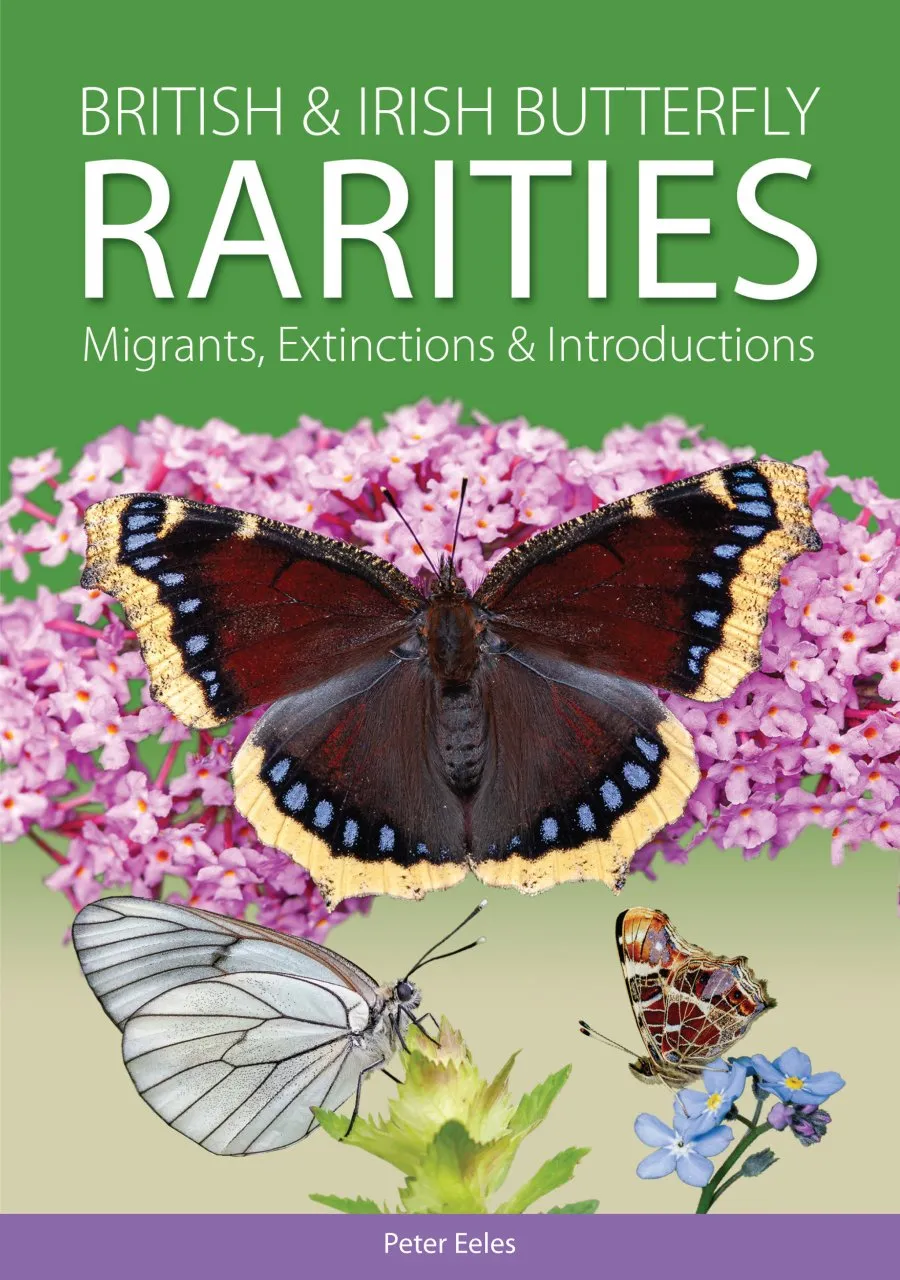Peter Eeles
Pisces Publications
2023
ISBN: 9781913994105
Reviewed by Richard Harrington
This is a companion volume to Peter Eeles’ wonderful Life Cycles of British and Irish Butterflies and is another beautifully produced triumph. You might think that the first book would feature the most species, but you’d be wrong. There are 59 recognised British and Irish butterflies at present, but Peter documents a further 62 of which feature on the British Isles checklist or its appendix but are not regarded as resident. Mind you, if Peter’s predictions are correct, the number of established species is set to rise. Twenty-three of these 62 are in the main checklist and regarded as ‘rarities’, some being migrants which likely arrive deliberately, some being vagrants which are off course, some being extinct. A further 29 species live too far away to have flown and might have arrived as immatures with imported foods, for example. The remaining ten species are regarded as ‘questionable’ and probably the result of erroneous records. Likely deliberate introductions and escapes from captivity are not included.
For each of the 23 ‘rarities’, Peter provides an introductory paragraph, often describing the origin of its Latin or vernacular name. There are then sections on its distribution, habitat, conservation status, life cycle and a fascinating summary of sightings. Finally, there is an analysis of where it might have come from and whether it might become resident. For the other species, there is a brief account of sightings, where they come from and how they might have got here or, in the case of final ten, why they probably didn’t. Each species is illustrated with Peter’s magnificent photographs, and a few from other people.
The first species described is the Apollo (Parnassius apollo). This is my personal favourite butterfly as it reminds me of happy times in the Swiss Alps and the sheer joy of stumbling across it. It came as a big surprise to learn that it has turned up over here on 20 occasions at locations from the far south of England to the far north of Scotland. Many other species are equally surprising and come with fascinating narratives. The Royal Entomological Society gets a mention in the section on the Black-veined White (Aporia crataegi), an especially fascinating case, as it used to be common in the British Isles and nobody fully understands why it went extinct and has failed to re-establish. At an 1884 meeting of the then Entomological Society of London, J. Jenner Weir expressed his concerns about this butterfly and the decline of butterflies everywhere, perhaps one of the earliest recorded instances of worries over insect declines.
The amount of research that must have gone into this book is truly phenomenal. It is as complete and authoritative an account as you could ever have of those rarities that every British butterfly enthusiast dreams of finding on our shores, and every butterfly ecologist and evolutionist wants to understand better.


